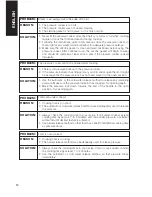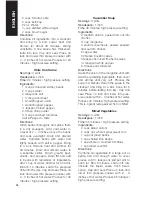
11
2.
Cold Water Release Method:
this method is used to release
pressure as quickly as possible,
and is primarily used for vegetables,
seafood and other tender foods
that can quickly overcook. To use
this method, remove the pressure
cooker from the burner, place in the
sink and run cold tap water gently
over the lid until steam dissipates
and the pressure indicator is
lowered (Fig 11). When putting the
cooker in the sink,
tilt it so the
cold water will run down the sides
of the cooker. Once the pressure
has been released completely and
the pressure indicator has dropped,
go to step # 4 in this section.
NEVER IMMERSE THE PRESSURE
COOKER IN WATER.
3.
Automatic Release Method:
When
using the automatic release method,
turn the dial on the operating valve
to the steam release position (steam
drawing position, fig. 8), and the steam
will be released automatically. Once the
steam has totally been released and
the pressure indicator has dropped, go
to #4 in this section (below).
4. After all the pressure has been released
and the yellow pressure indicator has
dropped, slide the pressure cooker
lock down towards the end of the
handle (fig. 5). Hold the pot handle
with your left hand and slide the lid
handle to the right with your right
hand.
Even though you have already
released the pressure, never open
the pressure cooker towards your
face since there may be intense
cooking steam still inside the unit.
To avoid the risk of scalding, let the
droplets of condensed water drip
back from the lid into the cooker.
5. Opening during cooking. If you should
need to open the pressure cooker
during the cooking process, it must
be depressurized first as described
in this section. We recommend using
the automatic release method for
this purpose, as this method will
cool down your pressure cooker the
least, hence aiding to build pressure
again faster to continue cooking. The
lid will be hot, so be careful when
opening and closing it; to reduce
the risk of burns, only touch the
handles. Remember that you are
interrupting the cooking process
by opening the cooker; when you
continue cooking, you must adjust
the remaining cooking time and set
the timer accordingly.
6. Never force the cooker open. It
may only be opened if the pressure
indicator has dropped into its socket
completely and no more steam
escapes when the safety lock is
moved to the open position.
Care and Cleaning
1. The Fagor SPLENDID Pressure
Cooker is made of high-quality, heavy
gauge, 18/10 stainless steel.
ENGLISH












































